What Inspires You?
In this feature, each month artists share one thing that excites them creatively.
One key piece to support healthy, productive creativity is stimulating inputs. What kinds of things stimulate the creative centers of the brain? What kind of inputs stimulate us visually? Emotionally? Spiritually? Mentally? Physically?
I’d really like to know, what’s one thing that fills your creative cup? Share with us in the comment section below.
Matthew Johnson
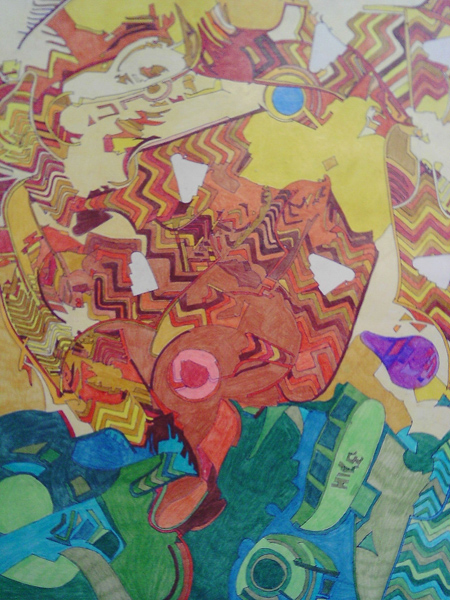
Hello M.A. bloggers, my name is Matthew Johnson and my creative stimulation dwells within the realm of the creation we call “Life.” From the tiniest insects that stroll around among the vast plains, and rolling hills of this planet, to the human machines that occupy this world, and discover the ins and outs about our existences through experiences. There are so many outlets that my artistic view drives upon, and my mind travels alongside imagination avenue with my solar-battery operated automobile packed full of music, paint, pens, and a broken navigational device (to ensure that I am in no way shape or form ‘set’ within any boundaries of expression). As you stroll through the corridors of the imagination, it is only you that can entail what you see and then begin to proceed to create the pieces you’re driven to produce. Continue all the great work, and may peace be your imagination’s significant other.
Matthew Johnson
Toni Murgas
 Things that inspire me may be a picture of nature, a book I’m reading, a dream or a song. I was reading a book on Edward Manet and how he used to cut paper as he got older to create his art. This inspired me to cut and paste colored paper.
Things that inspire me may be a picture of nature, a book I’m reading, a dream or a song. I was reading a book on Edward Manet and how he used to cut paper as he got older to create his art. This inspired me to cut and paste colored paper.
Toni Murgas
Leave a Comment
Food for Thought: Alice Neel
Food for thought is where I share a quote I’ve come across for your reflection and discussion 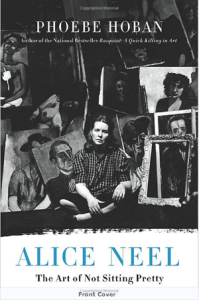 among the other artists in the mindful artist community.
among the other artists in the mindful artist community.
If you’ve been following me for a while you may have gathered that I’m a keen student of the creative process. I’m always interested in other artists’ experience of their art practice and how it can help us better understand and navigate our own.
My loving husband gave me this book on Alice Neel for Christmas that I’ve just begun reading so I thought a quote from Alice Neel might be in order.
You should keep on painting no matter how difficult it is, because this is all part of experience, and the more experience you have, the better it is… unless it kills you, and then you know you have gone too far.
– Alice Neel
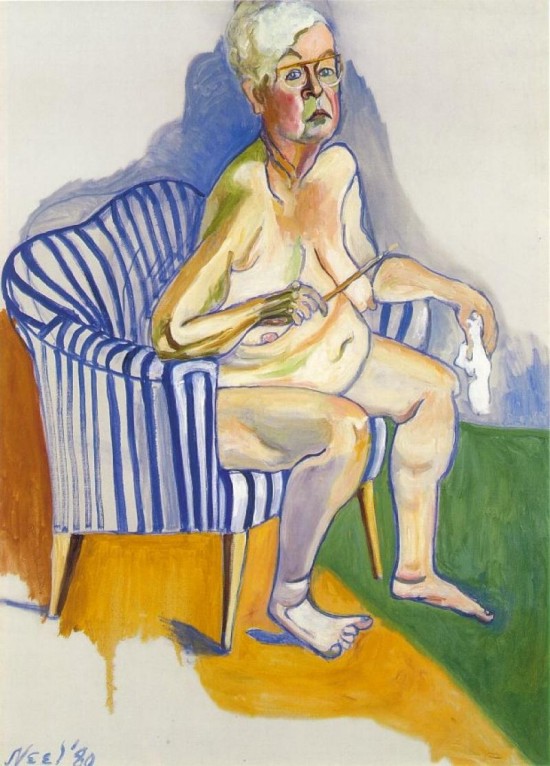 What about you? Do you feel you ought to keep making your work even though it is difficult?
What about you? Do you feel you ought to keep making your work even though it is difficult?
Can you give an example of a “difficult” time in your work?
What does it mean to you to have gone too far?
Please share your thoughts in the comment section below.
Leave a Comment
What Inspires You?
In this feature, each month artists share one thing that excites them creatively.
One key piece to support healthy, productive creativity is stimulating inputs. What kinds of things stimulate the creative centers of the brain? What kind of inputs stimulate us visually? Emotionally? Spiritually? Mentally? Physically?
I’d really like to know, what’s one thing that fills your creative cup? Share with us in the comment section below.
Kellyann Lyman

The continued practice of an academic rubric that instills a love of learning is what inspires me. I continue to explore the complexities of abstract painting by continually readdressing the medium with reinvented concepts and methods from conceptual and minimal art: the use of repetition, color palettes, materials, the appropriation of photographic images, ink, silkscreen, digital reproduction and the transmedia discourse.
Kellyann Lyman
Carol Steinberg
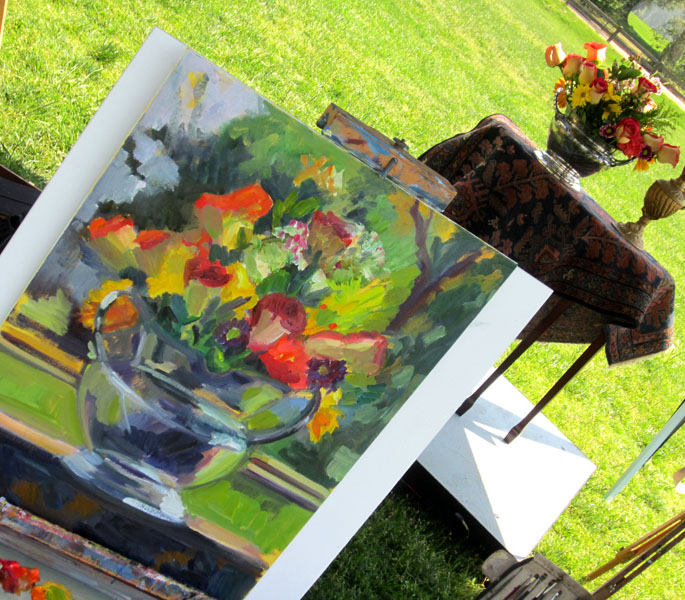 I’m inspired by flowers, sunlight, and bright colors!
I’m inspired by flowers, sunlight, and bright colors!
Carol Steinberg

Leave a Comment
Nine Tips For Making Great Digital Images of Your Art
I’ve sat on a few art juries before in a darkened room for hours looking at hundreds of projected images. The consensus from numerous jurors is that although you create outstanding art, if your images don’t show it, you can forget about getting selected.
Sometimes an overly dark or blurry photograph of a painting or sculpture is projected on the screen and you wonder “How could someone put such exquisite care into their art and not have noticed how poor these digital images are?”
It can happen to the best of us. Unless you are a photographer already, you may not have the skills or the eye yet to even know when your images are representing your work well.
Here’s something I’ve noticed: I spend so many hours, days, months with each piece of art I make that I often can’t “see” what my digital images really look like. Because I have such a deep relationship with the work, I see it as I visualize it in my head not as it’s appearing on the screen.
I’ve had to really train my eye over the years to be discerning as to whether my pictures are really representing the work. And, yes, it’s taken years.
Some suggestions:
1. If possible, sit down at your computer with your original art piece in your line of vision. Glance back and forth at both and pay attention to details, light, texture, etc. Really scrutinize every aspect of your work. Do those digital pictures really look like your work?
2. Find a discerning friend (or two) to do the same exercise. First show them the images on your computer, then show them the actual artwork. Ask them to be very specific as to the differences they see.
3. Invest in (or borrow) a good quality digital camera (a digital SLR with a detachable lens) to document your work. If you don’t have the funds yet, start putting away a little money each month. This will give you time to do your research.
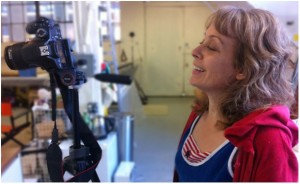
4. Research your camera options fully before buying. Use the internet, consumer reports, your camera geek friends, youtube reviews, etc. Some camera buffs LOVE to talk about cameras and will be happy to share their knowledge with you. They’ll also throw around a lot of technical jargon that may confuse you. Take notes. Give yourself time to learn and study. Don’t rush into your purchase.
5. Make a list of all the features you need your camera to have. If you make jewelry, you’ll need a different type of lens from an artist who does large scale public artworks.
6. Save money. When you are sure of what you want or need and have the choices narrowed to a few models, keep an eye out for sales or scan craigslist.
7. Learn a photo editing program such as Adobe Photoshop. If you take your own photographs, you must learn to use Photoshop®. There are some easy-to-learn tricks for making your work look better on the computer screen which is where most people will see it first. Even if you aren’t a great photographer, don’t have the best camera or have less-than-ideal lighting there are tons of things you can easily correct if you know Photoshop®. I recommend Photoshop because it’s the industry standard, and once you learn the basics, you can take it further if you like.
8. If you do small scale, 2-D work, try scanning it. I’ve saved a lot of money on professional photography by scanning my small works on paper. Important because when you do a lot of drawing, you can be quite prolific.
9. Hire a professional! If all this sounds totally daunting, and you are in a position financially to hire a professional art documenter to photograph your work, please DO! It is one of the BEST investments you can make in your work. Keep in mind that not any professional photographer can do good art documentation. Just as not every painter knows how to do monotype. Different skill sets, different equipment. Do your research. Ask artist friends for recommendations or call local museums and galleries and find out who they use. Be prepared to spend at least $125 an hour or a per artwork fee, plus processing. You may be able to save money here if you know Photoshop and can do your own image processing.
Leave a Comment
What Inspires You?
In this feature, each month artists share one thing that excites them creatively.
One key piece to support healthy, productive creativity is stimulating inputs. What kinds of things stimulate the creative centers of the brain? What kind of inputs stimulate us visually? Emotionally? Spiritually? Mentally? Physically?
I’d really like to know, what’s one thing that fills your creative cup? Share with us in the comment section below.
What Inspires You?
Danila Rumold
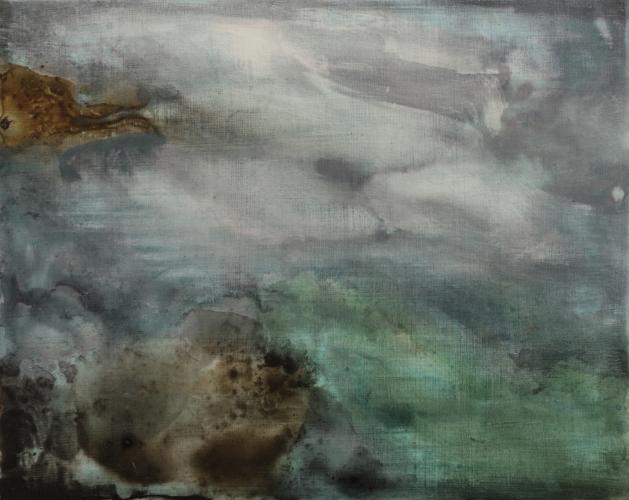
Trekking through the mountains, amongst the shaded forests, alongside the babbling rivers, and looking down into the crystal clear glacier lakes, I can experience moments of quiet and mental stillness. In this space, connected to Nature, my creativity flows, speaking my unshakable truth.
Danila Rumold
What Inspires You?
Cecilia Power
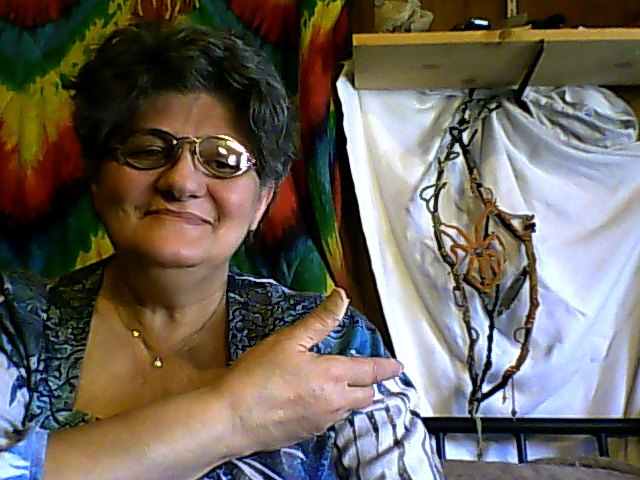 So many things inspire me, breathing, flowers, blue skies, a blade of grass, the list could go on ad infinitum! In my work, I see elements of nature, often obscure to anyone but myself. When I can, I give homage to nature in as clear a manner as possible for my chosen muse. It is not often easy to make pretty like I would like, it is complicated! One brush stroke with my knots takes hours, it is like I am painting in slow-mo! When I get something just the way I want it, ooh how satisfying to the spirit!
So many things inspire me, breathing, flowers, blue skies, a blade of grass, the list could go on ad infinitum! In my work, I see elements of nature, often obscure to anyone but myself. When I can, I give homage to nature in as clear a manner as possible for my chosen muse. It is not often easy to make pretty like I would like, it is complicated! One brush stroke with my knots takes hours, it is like I am painting in slow-mo! When I get something just the way I want it, ooh how satisfying to the spirit!
Cecilia Power
Leave a Comment
Food for Thought: David Hockney
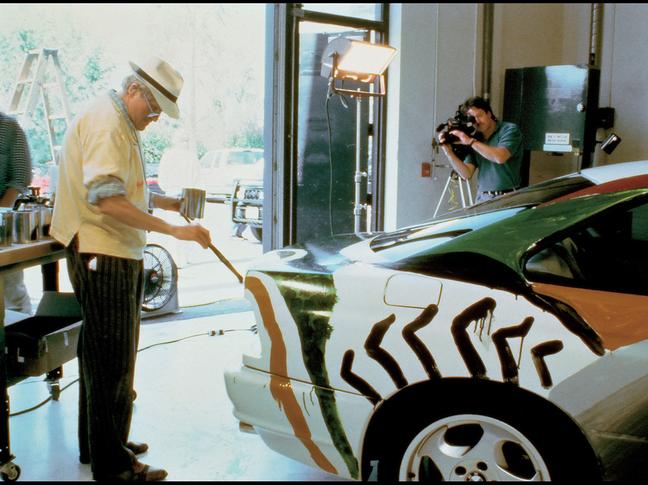
“Any artist will tell you he’s really only interested in the stuff he’s doing now. He will, always. It’s true, and it should be like that”
– David Hockney
What about you? Are you only interested in the work you are currently involved with? Or do you tend to look back on older work? Do you ever feel the work you created in the past is stronger or better work than the work you are presently engaged in?
Do you cherish your older work in such a way that you have a hard time selling it because of your attachment to it?
How does this impact your getting your work out into the world? Do you ever delay sending out work because the next body of work will be even better?
Let’s get the conversation started! Please leave your comments below.
Leave a Comment
